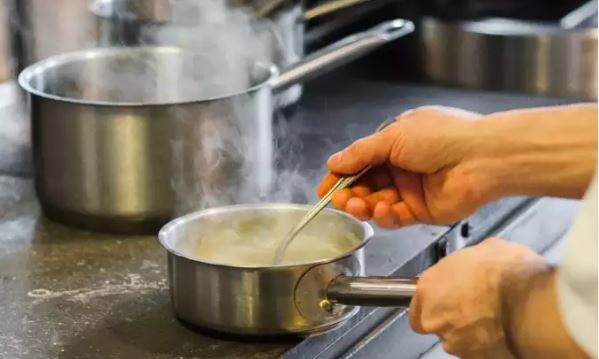Lifestyle
7 things to keep in mind while cooking with stainless steel

When it comes to cooking in a South African kitchen, stainless steel is often preferred by most people.
This is because, stainless steel is known for its durability, even heat distribution, and resistance to rust and corrosion.
From sauteing to deglazing, stainless steel is often said to be suitable for various cooking techniques, and its non-reactive nature makes it ideal for preparing a wide range of dishes.
While it requires some care, understanding its properties and following a few tips can make cooking with stainless steel a rewarding experience, providing longevity and versatility in the kitchen.
Cooking with stainless steel cookware offers a durable and versatile option for every kitchen enthusiast.
Here are some expert tips that will keep you in command when cooking with stainless steel, ensuring a seamless and enjoyable culinary experience.
1. Preheat wisely
Stainless steel cookware is renowned for its ability to distribute heat evenly, but preheating is crucial. Begin with a low to medium heat setting and gradually increase it to avoid hotspots. Adding oil or other fats when preheating can help prevent sticking and enhance the overall cooking process.
2. Give ample space for food
When cooking with stainless steel, patience is indeed a virtue. Allow the cookware to preheat thoroughly, and refrain from overcrowding the pan. Giving each piece of food ample space ensures proper browning and prevents the dreaded steaming effect that occurs when the pan is overloaded.
3. The power of oil
To create a non-stick surface and enhance flavour, use the right type of oil with a high smoke point, such as vegetable or grapeseed oil. Add the oil to the pan before it gets too hot, and ensure it coats the entire cooking surface. This not only aids in cooking but also facilitates easy cleaning.
4. Mindful use of acidic ingredients
Stainless steel is durable, but acidic ingredients like tomatoes and citrus can react with the metal, leading to discolouration or even imparting a metallic taste. Use caution when cooking acidic dishes and consider using non-reactive cookware for such preparations.
5. Embrace the fond
The golden-brown bits that accumulate at the bottom of the pan while cooking are a treasure trove of flavour. Use broth, wine, or water to deglaze the pan and incorporate those flavourful bits into sauces or gravies. Stainless steel’s ability to withstand high temperatures makes it ideal for deglazing.
6. Go easy on the heat
Stainless steel cookware is efficient at retaining heat, often requiring lower heat settings than other materials. Avoid using high heat consistently, as it can lead to food sticking or even warping of the pan. Moderate heat with occasional boosts is generally sufficient for most cooking tasks.
7. Clean with care
While stainless steel is known for its resistance to staining and rust, proper cleaning is essential. Allow the cookware to cool before washing, and avoid using abrasive materials that can scratch the surface. Baking soda can be effective for tackling stubborn stains without damaging the finish.






